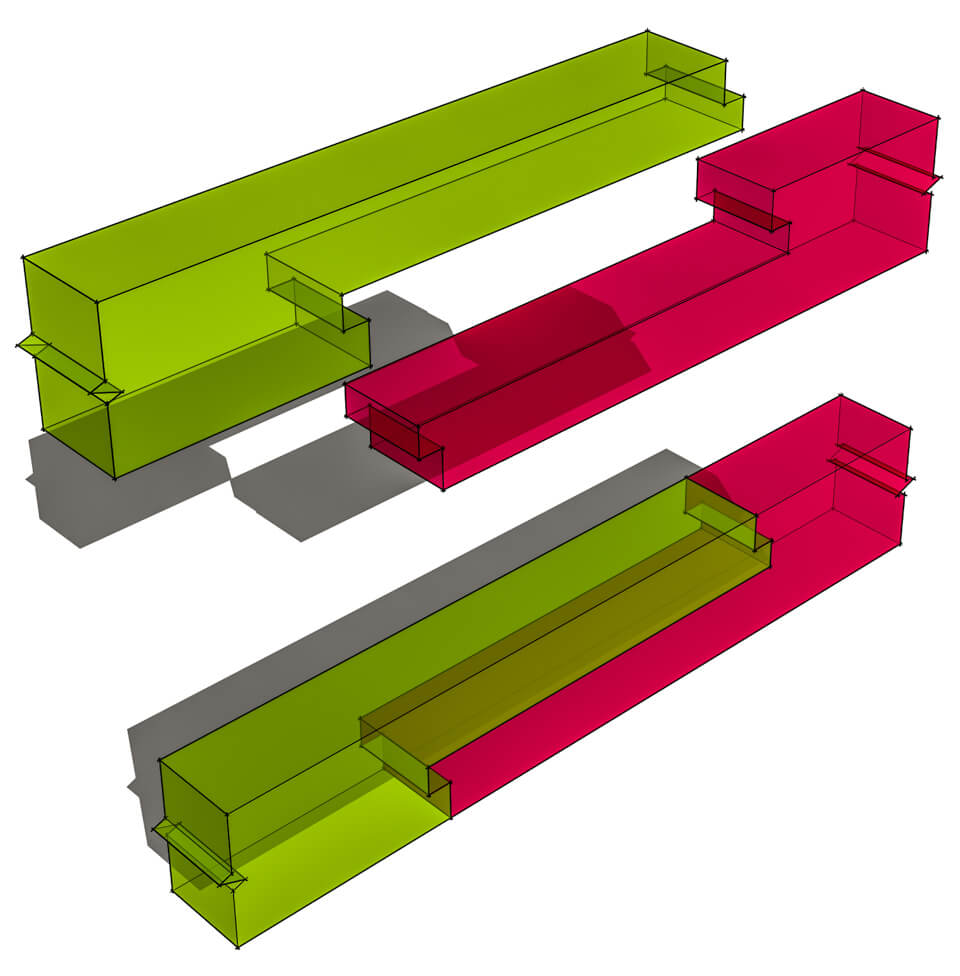
If you need to span a distance greater than your lumber dimensions, scarf joints are the way to go. Another variation on the scarf joint, this stop bladed scarf joint is a half-lap joint with the addition of the stops, also called tongues or blades. The stops prevent twisting and also improve bending and tensile strength. If you need to lengthen either a sill plate or roof plate this joint would be a good choice.
You can use a chain mortiser to notch out the blades, making cutting this joint this fairly straightforward.


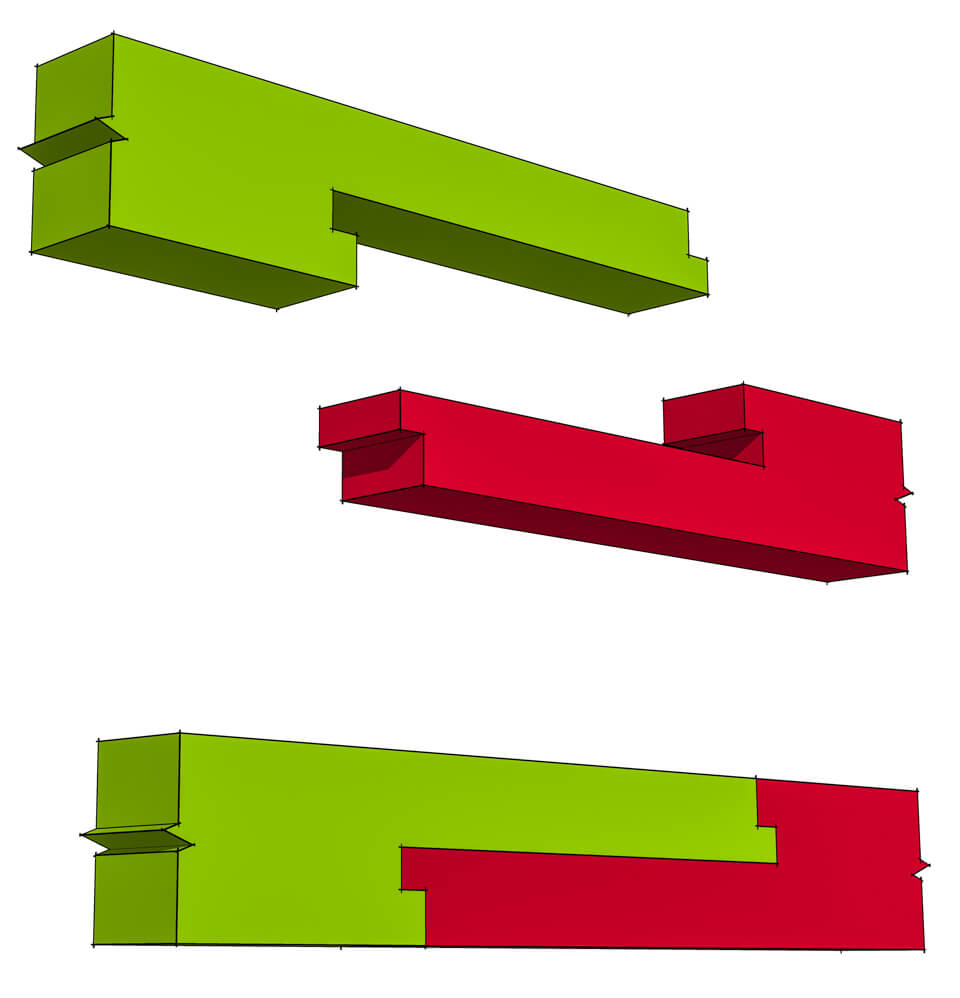
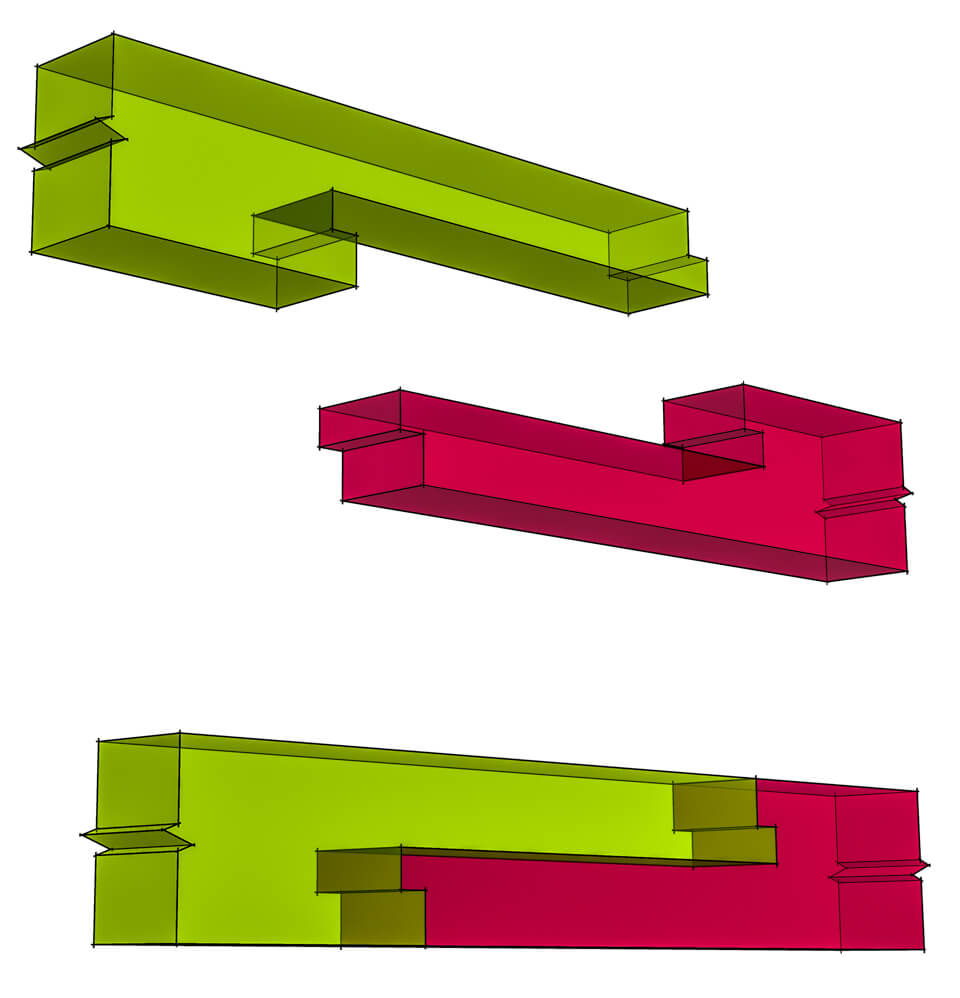
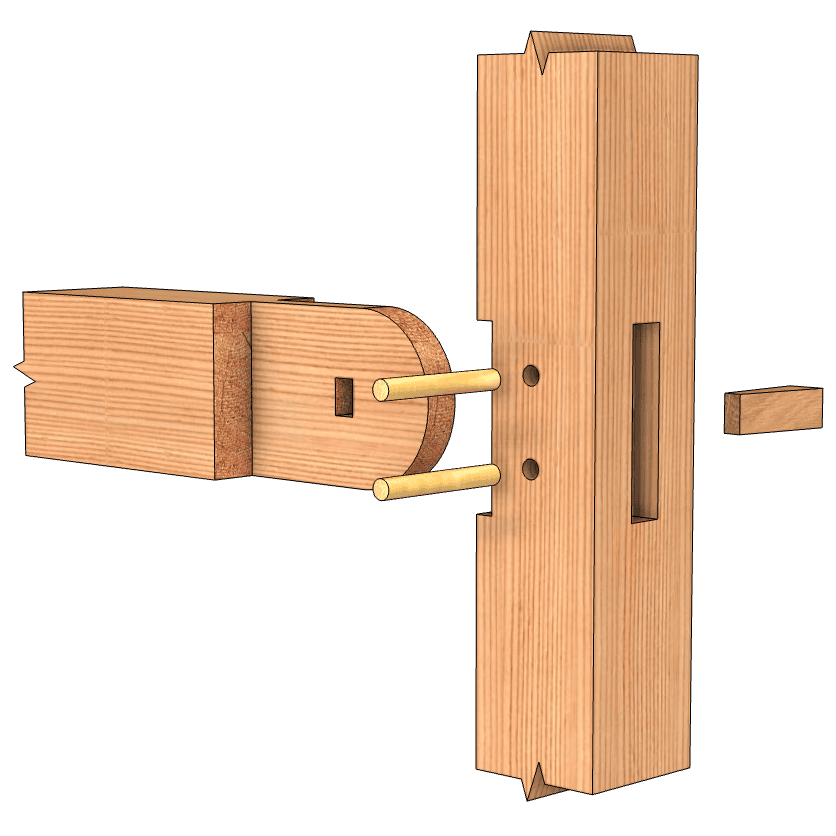
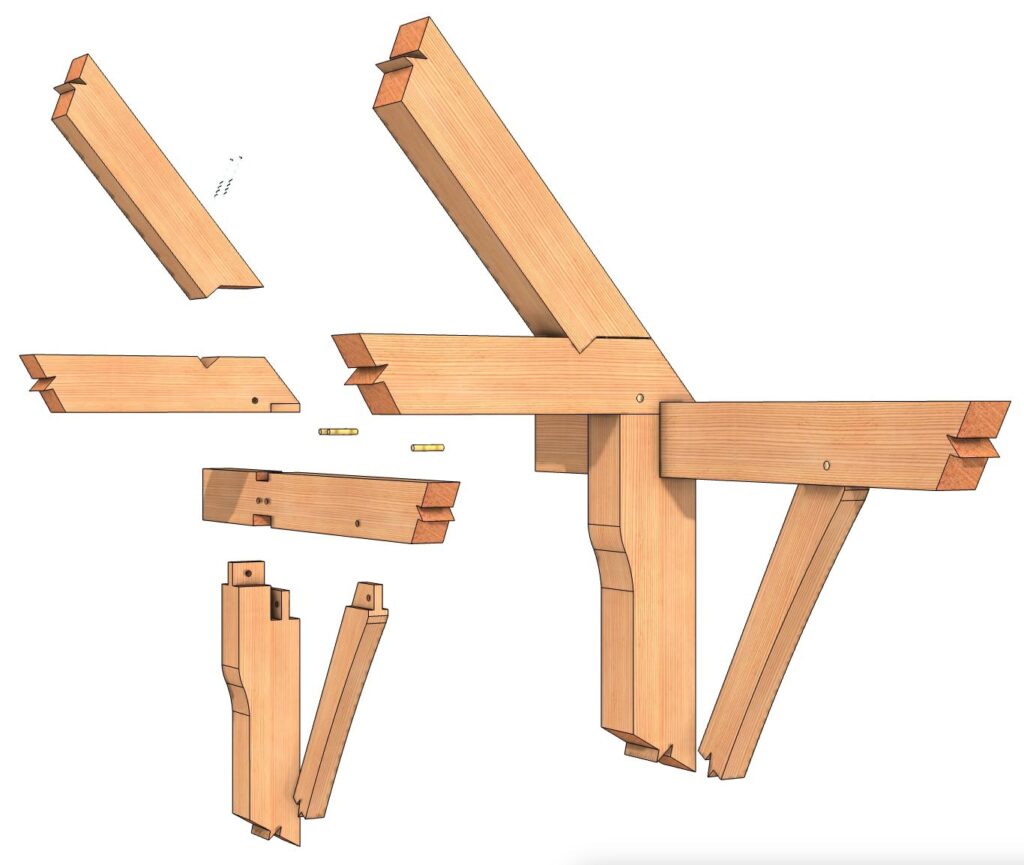
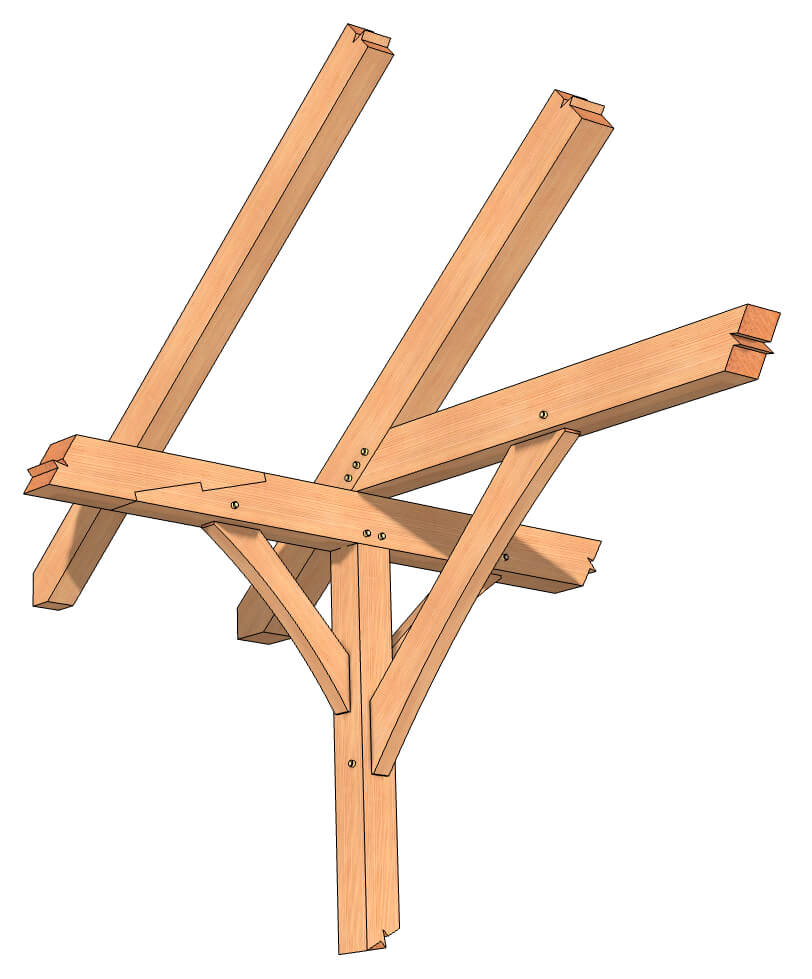
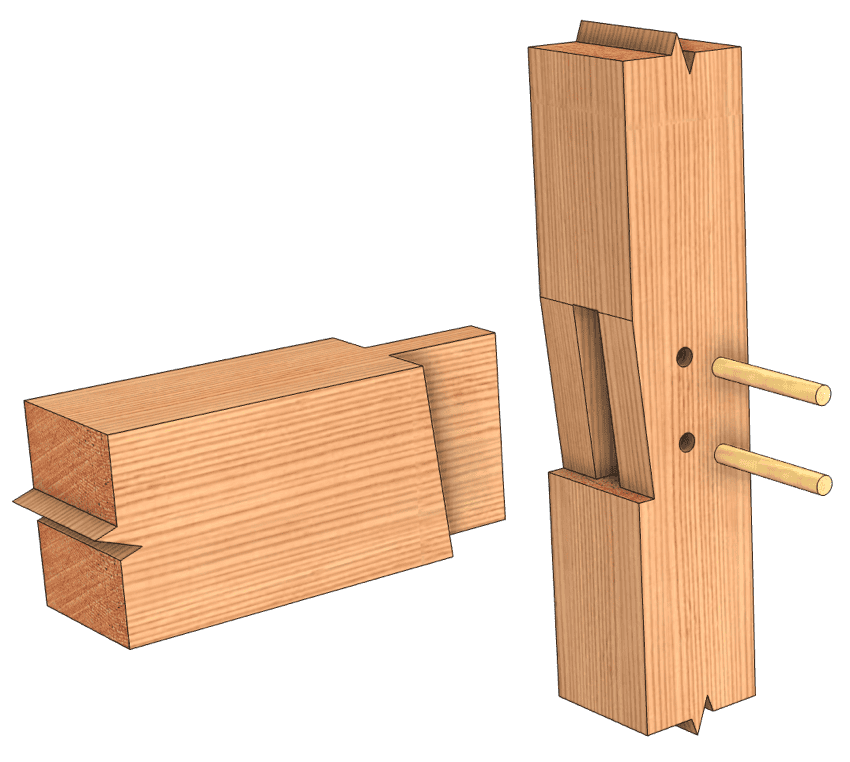
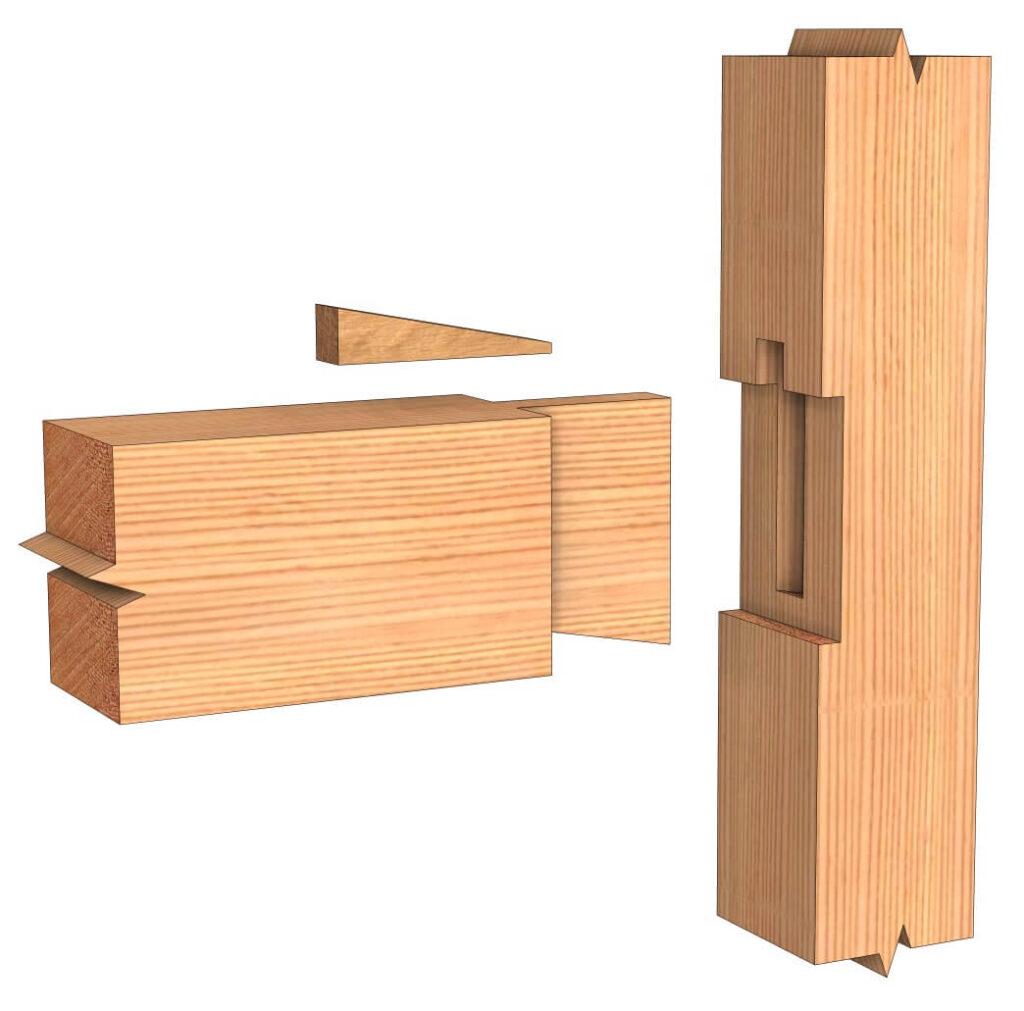
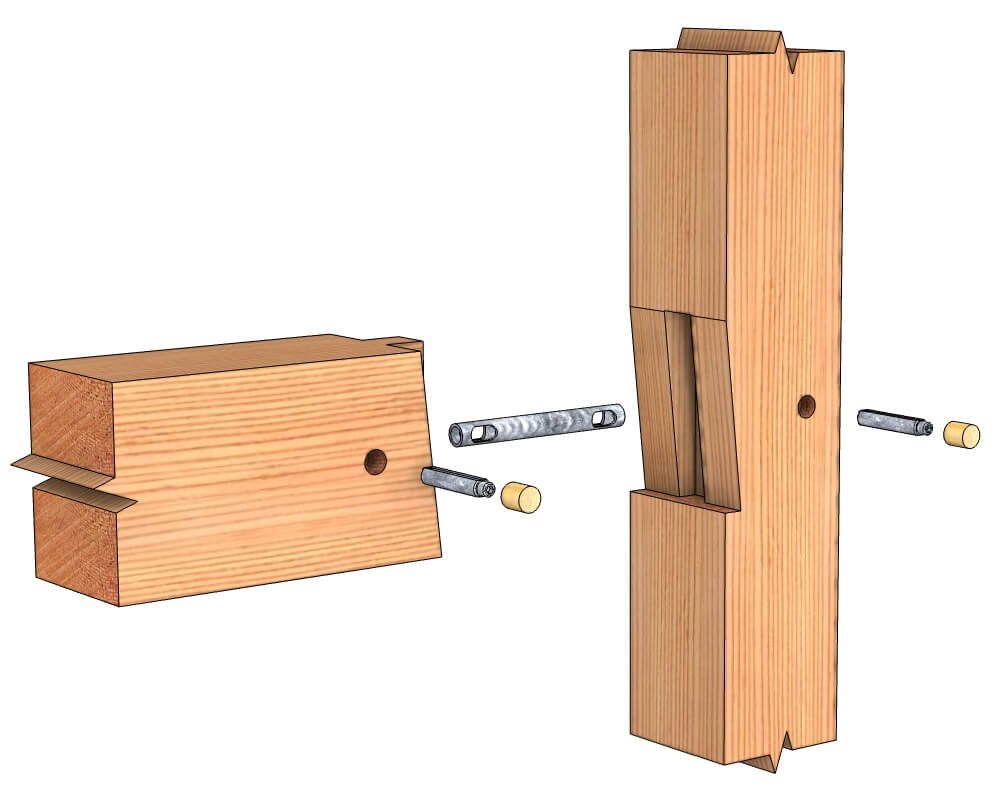
Very well presented.
Thanks Gary!
Great information and illustrations.
For the non-pegged joints, are fasteners used to hold the joints in place?
With all the different scarf joints, which is best for a top plate near a post?
Yes, you can use pegs, screws or thread to hold them all together. This detail is part of a series, you can check them all out and see the different options at https://timberframehq.com/tag/scarf-joint/
I like a spayed scarf joint personally, others like the lapped scarf joints. In most cases, it comes down to personal preference.
I love this joint! Can I use this type of pegged joint to join two timbers that are going to span a distance? For example I want to span a distance of 16ft but don’t have 16ft timbers. Can I join two 8ft beams with a pegged scarf joint in the middle and effectively span that gap? Thanks!!
Yes, Roger, if you need to create a beam longer than your lumber dimensions, a scarf joint is the way to go